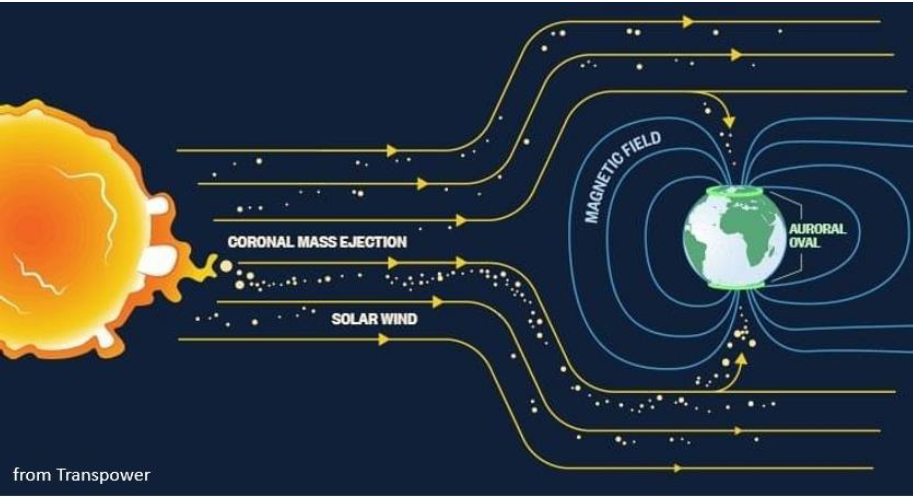

Space weather’ refers to the occasional bursts of solar energy that occur when large eruptions happen on the Sun. This energy is released into the Solar System and is sometimes directed towards Earth. Solar events that cause space weather impacts include solar flares, particle radiation events, and coronal mass ejections.
Solar flares: Solar flares are sudden bursts of X-ray energy from the Sun. X-rays can impact Earth within 8 minutes. Radio communications, Global Positioning Systems (GPS), and radar technology can be affected.
Particle radiation: Solar energetic particle events are bursts of high-energy protons accelerated from the Sun’s outer atmosphere. They can affect satellites and cause health concerns for air travellers. These events are associated with only minutes of warning.
Coronal mass ejections: The most disruptive of space weather phenomena. Billions of tonnes of magnetised solar plasma erupt into space. If the material is Earth-directed, geomagnetic and ionospheric storms can occur. Both can significantly disrupt technology in the near-Earth environment. The event’s size and scale will determine the level of impact and type of disruption. An extreme coronal mass ejection usually comes with at least 12 hours' notice. However, the exact characteristics will be unknown until it is observed at the L1 satellite 15-60 minutes before reaching Earth. This early warning can provide time to adjust the power system to reduce damage.
Solar activity follows an eleven-year cycle, with the next solar maximum expected in 2025. However, significant space weather events can occur at any time.
What are the potential impacts?
Extreme space weather is a low probability event, but it could have far reaching, potentially catastrophic consequences.
Space weather can disrupt critical infrastructure like electricity, gas, rail, airways, and communication networks. It can also affect systems that these services rely on, such as GPS, Global Navigation Satellite Systems (GNSS), and radio communications.
If critical infrastructure is damaged, the recovery period may be prolonged due to the significant international demand on replacement equipment with New Zealand potentially competing with larger markets.
To reduce the magnitude and timeframe of disruption, mitigation actions should be taken during the short window of opportunity, between identifying the event and impacts on Earth.
Space weather events can damage electricity networks, which could mean you and your whānau would be without mains power for some time.
Power outages can happen anywhere at any time, so it’s important to be prepared. Have a “prep talk” with your whānau and figure out how you’ll cope when the power goes out. How will you prepare food, keep warm and see in the dark? And how will you keep up with the latest news?
Get to know your neighbours because you may need to help each other out. If you are medically dependent on electricity-powered devices or equipment, make sure you have a backup plan.
Get some emergency supplies together - including torches and a solar or battery powered radio, enough water for cooking and hygiene, and either a gas stove or food that does not need to be cooked.
Find out more at: Get Your Home Ready